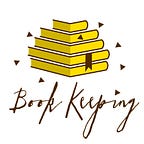From the Mixed-Up Files of Mary Kay Zuravleff: E. L. Konigsburg
In grade school, I wrote a yearly book report on From the Mixed-up Files of Mrs. Basil E. Frankweiler by E. L. Konigsburg. Although I read plenty of books, there was only one I ever wanted to report on. My essays reached different audiences: when the book was published (fourth grade), we lived in New York; in fifth grade, we’d moved back to Oklahoma; and in sixth grade, I fashioned the book into a play that my best friend Lori and I performed at school and the local library.
I love an uncountable number of details in Konigsburg’s book, starting with the gender-neutral author’s name “E. L.,” a mystery in itself. The book flap did not out her as Elaine Lobi Konigsburg; in fact, the bio avoided pronouning the author. In those pre-Internet days, we could entertain him/her theories for as long as it took to work over a Sugar Daddy Pop. And the title! I always hoped some adult would condescendingly ask “What are you reading?” so I could unfurl that mega-title. It boasts the same number of syllables as “Supercalifragilisticexpialidocious,” which I’d been singing since Mary Poppins came out.
But back to Konigsburg’s yarn, in which two kids run away from home, live among great art, and tackle a mystery. The book thrillingly begins: “Claudia knew that she could never pull off the old-fashioned kind of running away. That is, running away in the heat of anger with a knapsack on her back. She didn’t like discomfort; even picnics were untidy and inconvenient: all those insects and the sun melting the icing on the cupcakes. Therefore, she decided that her leaving home would not be just running from somewhere but would be running to somewhere. To a large place, a comfortable place, an indoor place, and preferably a beautiful place. And that’s why she decided upon the Metropolitan Museum of Art in New York City.”
Our 12-year-old heroine wants to escape “being straight-A’s Claudia Kincaid,” giving no thought to her family’s worries about her—and hold it right there. In the course of sharing my favorite childhood book, have I uncovered an early inspiration for my new novel? After all, Man Alive! is essentially the story of a man escaping his routine as a respected child psychiatrist, giving no thought to his family’s concerns or even income.
My book begins, “Everyone deserves a vacation from himself, Owen Lerner thinks, on the last day of his.” Dr. Lerner has this thought as he’s driving the family to their beach burger joint. And then he is struck by lightning while feeding the meter. Just as Claudia Kincaid wants to go to rather than just away from, Owen Lerner believes his accident transports him to a better place rather than away from the workaday world. In those few electrified seconds, he experiences compassion and understanding he has never known in his neurotypical life; despite his injuries, he prefers this altered reality.
After receiving school credit for two essays and a play, have I just crafted a book-report-inspired novel? Maybe if I’d written on the Bible stories I repeatedly heard or on movie soundtracks I memorized, I would have reached the same conclusion, that the stories and syntax that loop through our childhood become our raw material. It’s humbling to recognize how many “original thoughts” can be traced to a source—although, what a source. Perhaps the literary world, having lost E. L. Konigsburg just this April, would approve of my taking the baton from her. And running away with it.
Mary Kay Zuravleff is the author of the forthcoming Man Alive!, as well as The Bowl Is Already Broken, which The New York Times praised as “a tart, affectionate satire of the museum world’s bickering and scheming,” and The Frequency of Souls, which the Chicago Tribune deemed “a beguiling and wildly inventive first novel.” Honors for her work include the American Academy’s Rosenthal Award and the James Jones First Novel Award, and she has been nominated for the Orange Prize. She lives in Washington, D.C., where she serves on the board of the PEN/Faulkner Foundation and is a cofounder of the D.C. Women Writers Group.
